Saba Moeinizade
An Applied Deep Learning Approach for Estimating Soybean Relative Maturity from UAV Imagery to Aid Plant Breeding Decisions
Aug 02, 2021

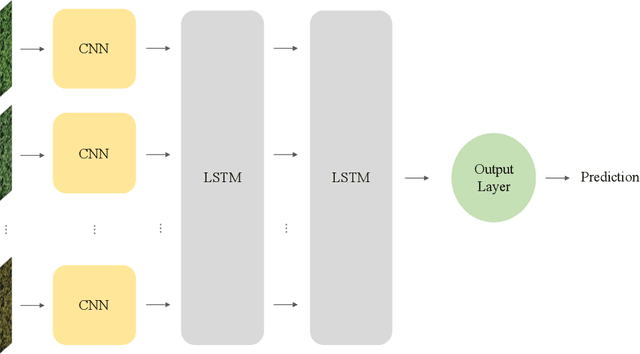

Abstract:For a global breeding organization, identifying the next generation of superior crops is vital for its success. Recognizing new genetic varieties requires years of in-field testing to gather data about the crop's yield, pest resistance, heat resistance, etc. At the conclusion of the growing season, organizations need to determine which varieties will be advanced to the next growing season (or sold to farmers) and which ones will be discarded from the candidate pool. Specifically for soybeans, identifying their relative maturity is a vital piece of information used for advancement decisions. However, this trait needs to be physically observed, and there are resource limitations (time, money, etc.) that bottleneck the data collection process. To combat this, breeding organizations are moving toward advanced image capturing devices. In this paper, we develop a robust and automatic approach for estimating the relative maturity of soybeans using a time series of UAV images. An end-to-end hybrid model combining Convolutional Neural Networks (CNN) and Long Short-Term Memory (LSTM) is proposed to extract features and capture the sequential behavior of time series data. The proposed deep learning model was tested on six different environments across the United States. Results suggest the effectiveness of our proposed CNN-LSTM model compared to the local regression method. Furthermore, we demonstrate how this newfound information can be used to aid in plant breeding advancement decisions.
A reinforcement learning approach to resource allocation in genomic selection
Jul 22, 2021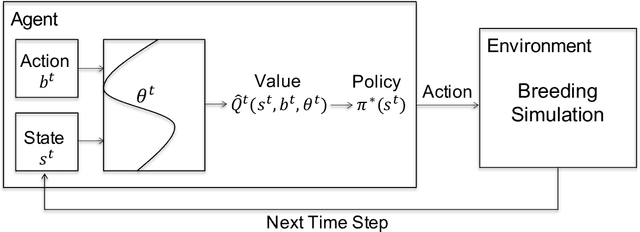
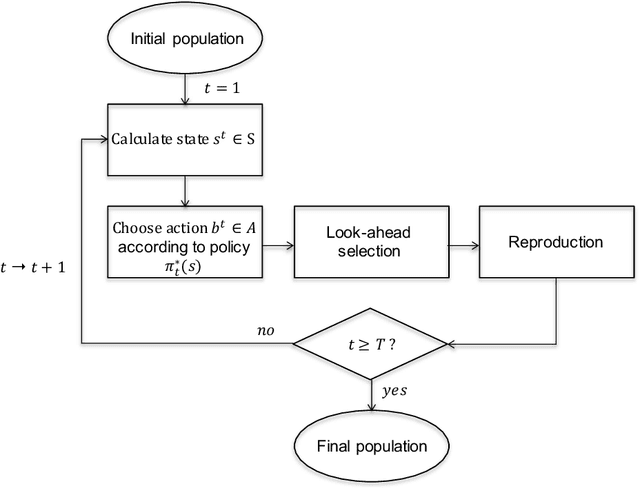
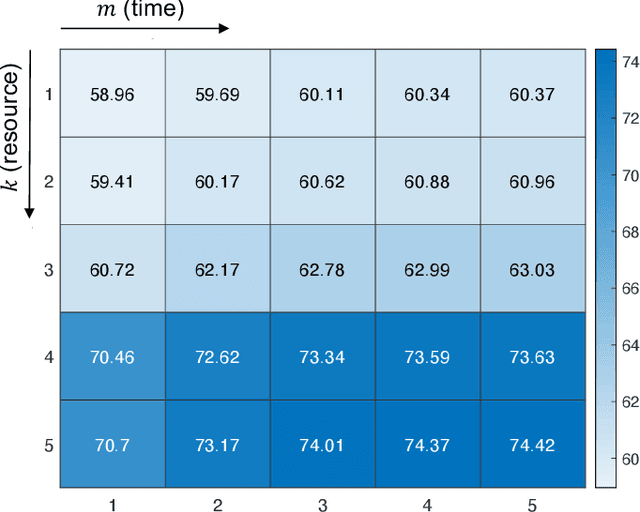
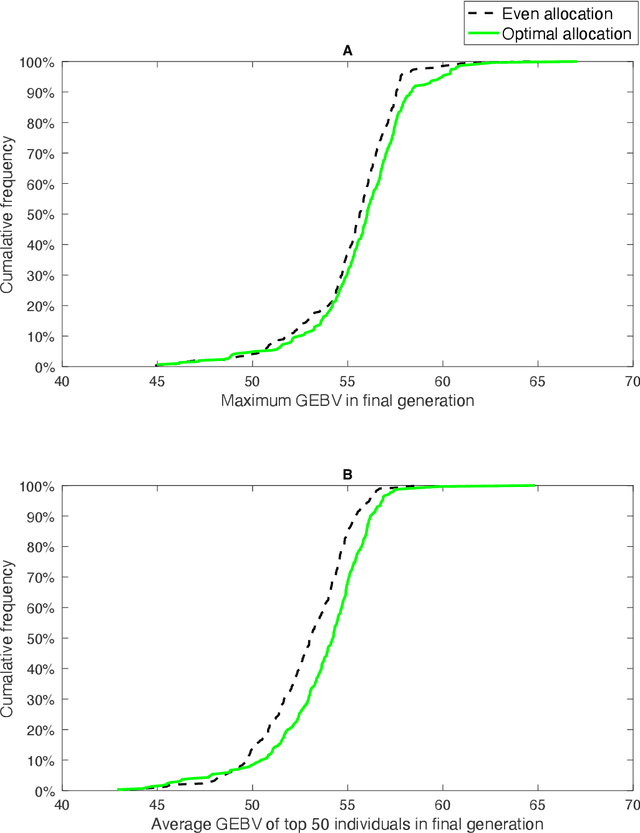
Abstract:Genomic selection (GS) is a technique that plant breeders use to select individuals to mate and produce new generations of species. Allocation of resources is a key factor in GS. At each selection cycle, breeders are facing the choice of budget allocation to make crosses and produce the next generation of breeding parents. Inspired by recent advances in reinforcement learning for AI problems, we develop a reinforcement learning-based algorithm to automatically learn to allocate limited resources across different generations of breeding. We mathematically formulate the problem in the framework of Markov Decision Process (MDP) by defining state and action spaces. To avoid the explosion of the state space, an integer linear program is proposed that quantifies the trade-off between resources and time. Finally, we propose a value function approximation method to estimate the action-value function and then develop a greedy policy improvement technique to find the optimal resources. We demonstrate the effectiveness of the proposed method in enhancing genetic gain using a case study with realistic data.
 Add to Chrome
Add to Chrome Add to Firefox
Add to Firefox Add to Edge
Add to Edge